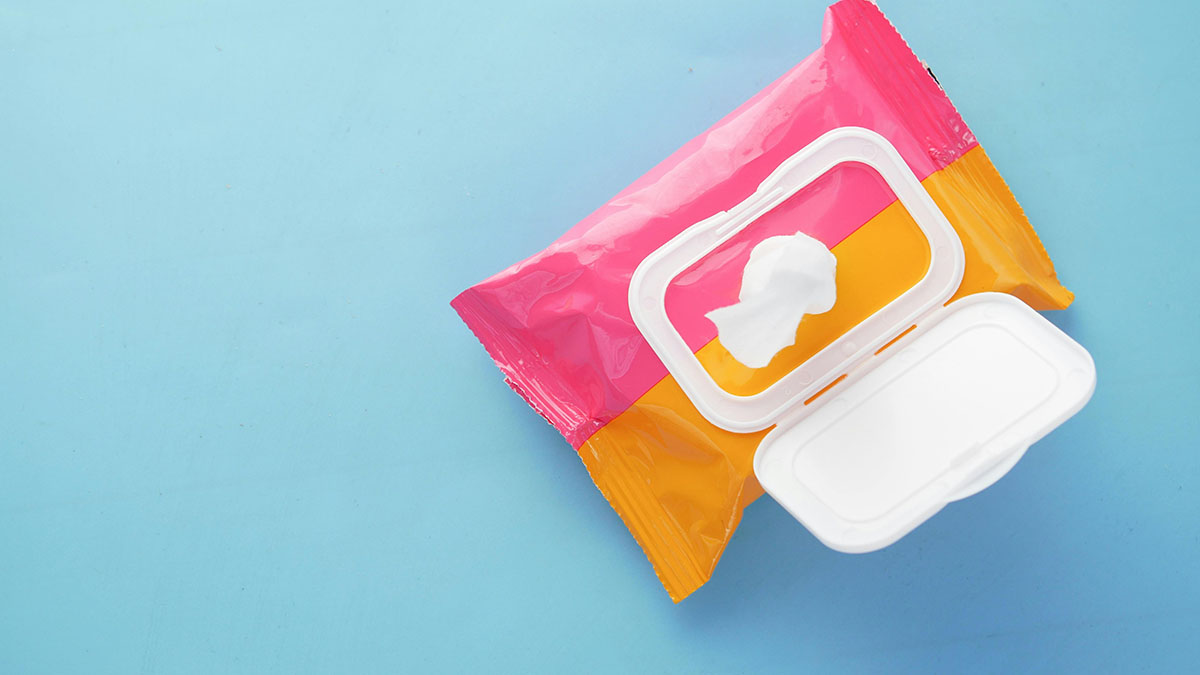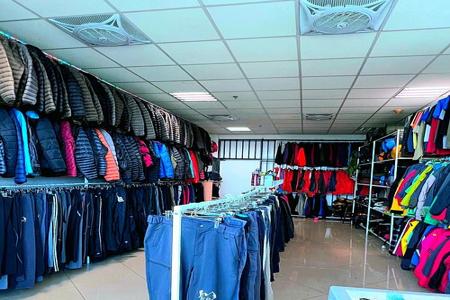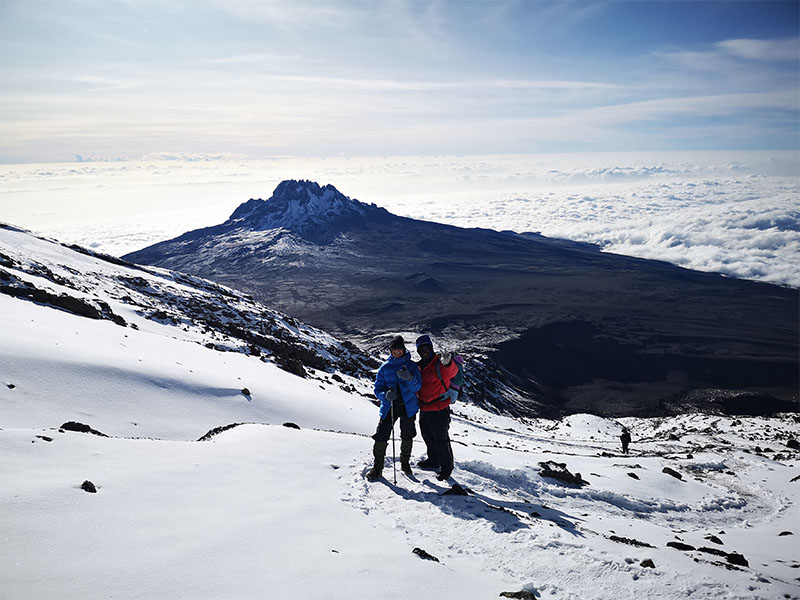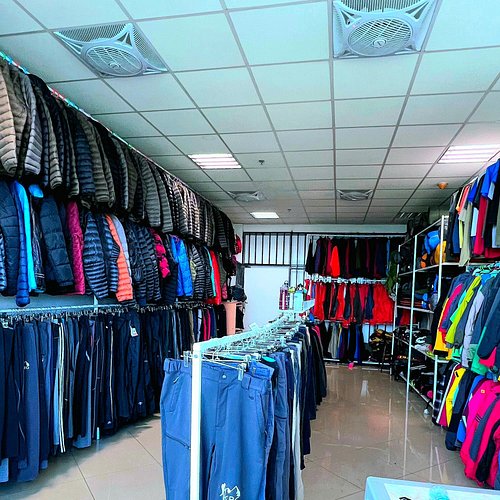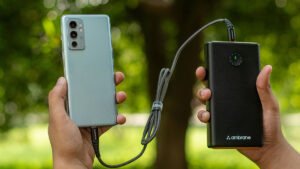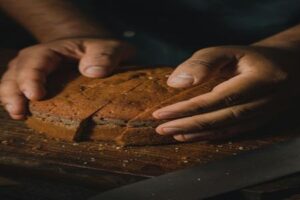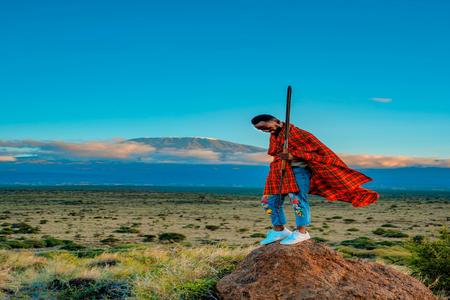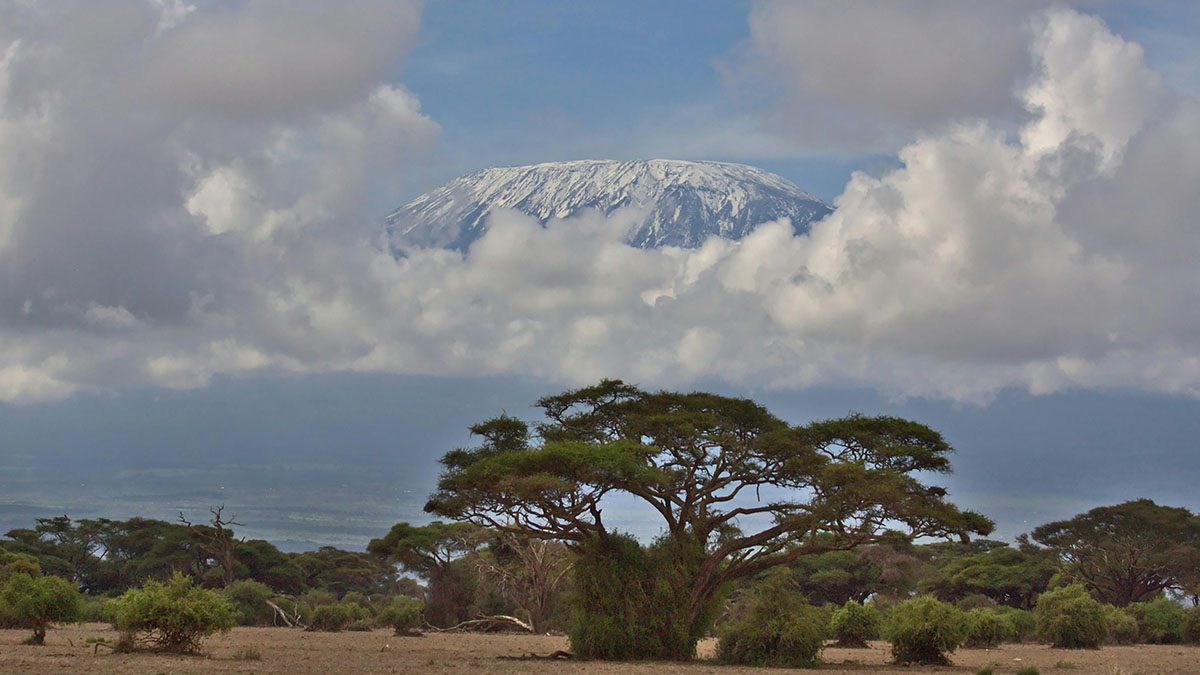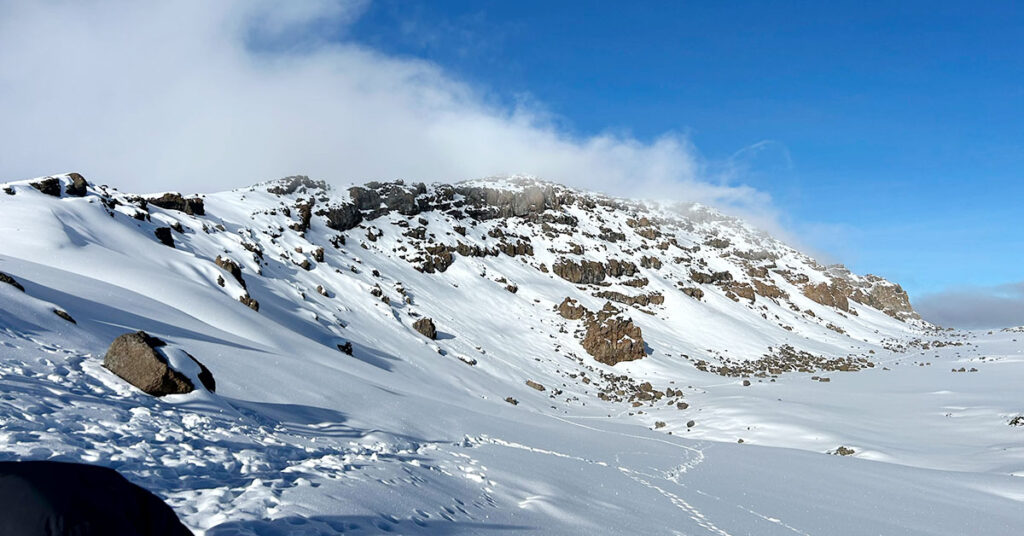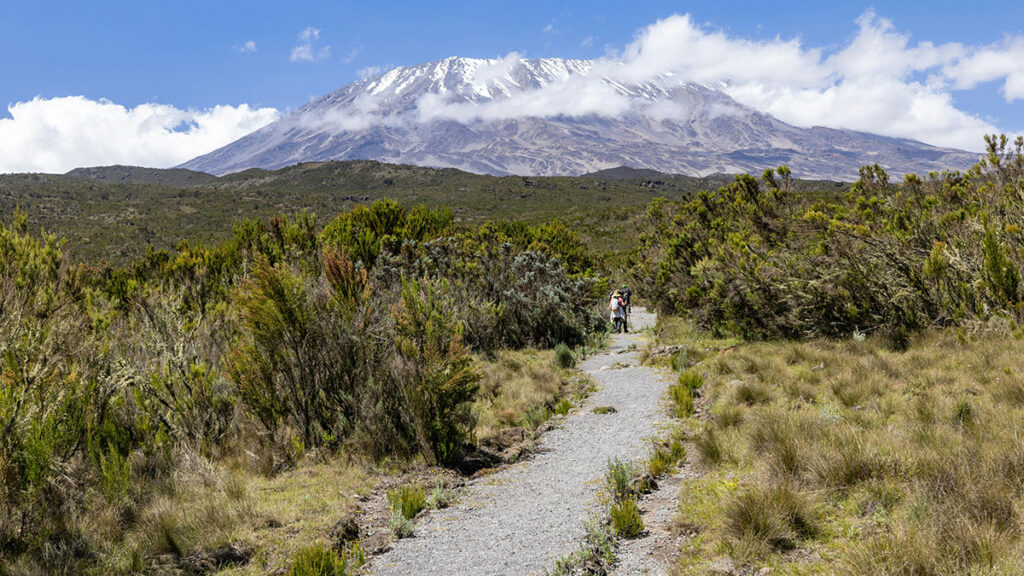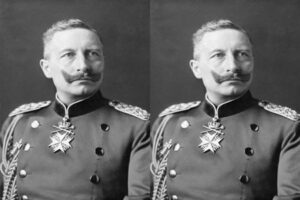Table of Contents
Hygiene on Mount Kilimanjaro: Showers, Water, and Staying Fresh While Trekking
Maintaining good hygiene during your Mount Kilimanjaro trek is essential for your health and overall comfort. At high altitudes, staying clean becomes more difficult due to limited facilities and rugged conditions — but with the right gear and mindset, you can stay fresh and confident throughout your journey.
Stay healthy on the mountain with our expert hygiene tips, water safety advice, and simple cleanliness routines.

Showers on Kilimanjaro: What You Can Expect
Many trekkers worry about going several days without a shower. While it’s true that showers aren’t available at every campsite, Kili Quests offers portable hot showers as part of our Premier Package.
Premier Package Showers
- Select camps include private shower tents for Premier trekkers. Our team sets up warm, clean water units — so you can enjoy a refreshing rinse after a long hike. This comfort feature is ideal for those who want added cleanliness during the trek.
How to Stay Clean Without Showers
If you’re not using the Premier Package, there are still great ways to stay clean and refreshed:
- Hygiene wipes and wet towels: Lightweight and effective for wiping down at camp.
- Sponge baths: Your porters will provide a small bowl of water for washing face, hands, and underarms.
- Dry shampoo or body powder: Useful to absorb sweat and reduce odors.
Don’t forget to double-check your hygiene supplies in our Kilimanjaro Packing List.
Water on Kilimanjaro: Hydration and Hygiene
Water is vital not only for hydration but also for cleaning. Here’s what to expect:
Water Sources
- Your guides purify water from mountain streams using filtration and tablets. This water is safe for drinking and for basic cleaning.
Personal Hygiene Water
- Porters provide limited amounts of water for face and handwashing. Use sparingly. A collapsible water bottle is helpful for keeping some clean water with you.
Staying Hydrated
- Trekking at high altitudes requires 3–4 liters of water per day. Hydration supports your body’s adjustment to altitude and helps avoid sickness — don’t neglect it.
Discover how to keep your gear clean and powered up on the mountain
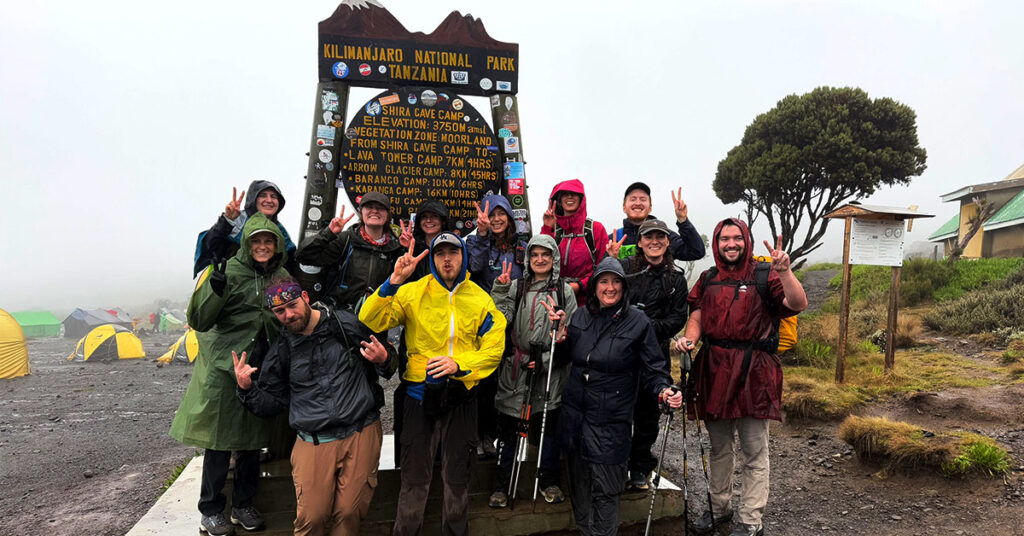
Staying Fresh & Comfortable on the Trail
Even without daily showers, small routines help you stay clean:
- Change clothes daily: Quick-dry shirts, clean socks, and undergarments make a huge difference.
- Foot care: Air out your feet at camp, use foot powder, and change socks to prevent blisters.
- Deodorant & spray: Travel-sized options help manage odor.
- Breath refreshers: Gum or mints keep your mouth feeling fresh on the trail.
Tip: Keep your hygiene kit easily accessible in your daypack.
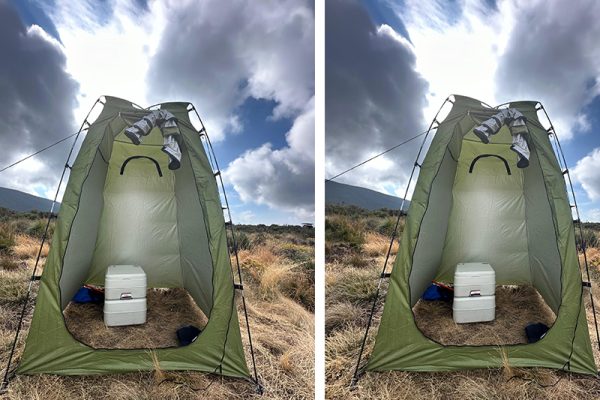
Respecting the Environment: Clean Trekking Practices
Kilimanjaro is a UNESCO World Heritage site — let’s help protect it.
- Use biodegradable soap and wipes only.
- Carry your waste: Never leave tissue or plastic behind. Kili Quests provides trash bags at every camp.
- Avoid overuse of water from natural sources — it’s a shared resource.
Kilimanjaro Tipping Guide – Learn how our support staff helps keep your camp clean and your trek comfortable.
Personal Hygiene Kit: What to Pack
Here’s what to bring for a clean trek:
- Hygiene wipes or wet towels
- Biodegradable soap
- Small washcloth or sponge
- Quick-dry clothes and underwear
- Foot powder
- Deodorant
- Toothbrush and toothpaste
- Breath mints or gum
- Moisture-wicking socks
- Small quick-dry towel
Kilimanjaro Trek Health & Medication Tips – Good hygiene supports your health — especially at altitude.
FAQs: Staying Clean on Kilimanjaro
Qn 1.Can I take a shower while trekking Kilimanjaro?
Yes — if you’re part of Kili Quests’ Premier Package, you’ll have access to private hot showers at selected camps.
Qn 2. What if I don’t have access to a shower?
You can stay clean using wet wipes, sponge baths, and a change of clothes each day. This is how most trekkers manage hygiene on the mountain.
Qn 3. Is the water on Kilimanjaro safe to use for hygiene?
Yes — water for hygiene and drinking is filtered by your guides. However, always use it sparingly and ask your guide when in doubt.
Qn 4.What happens to used hygiene waste like tissues or wipes?
You’ll carry all your waste down the mountain. Kili Quests provides trash bags and ensures Leave No Trace practices are followed.
Qn 5.What are the best hygiene items to bring?
Essential items include: hygiene wipes, biodegradable soap, travel toothbrush, deodorant, and moisture-wicking clothes.
Ready to Trek Kilimanjaro with Comfort?
Ready to Trek Kilimanjaro with Comfort?
If you value comfort and cleanliness, choose Kili Quests’ Premier Package for access to hot showers, private toilets, and expert mountain support.
Contact us today to book your trek and upgrade your Kilimanjaro experience — because adventure should never mean discomfort.
Related Articles
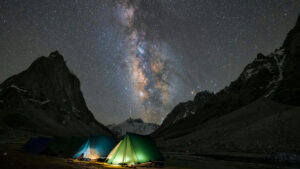
Guide to Cold Nights on Mount Kilimanjaro
April 13, 2025
No Comments
Table of Contents Mount Kilimanjaro Night Temperature: What to Expect During Your Trek and Summit Day | Kili Quests Climbing Mount Kilimanjaro is a
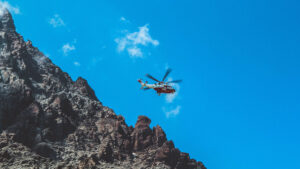
High-Altitude Emergency Insurance for Kilimanjaro Climbs
April 12, 2025
No Comments
Table of Contents The Best Medical Insurance for Kilimanjaro Treks: What You Need to Know for Emergencies | Kili Quests Climbing Mount Kilimanjaro is
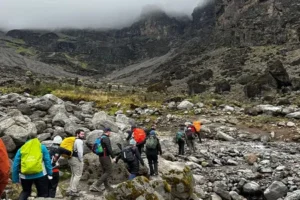
Beginner’s Guide to Climbing Kilimanjaro: First-Timer Tips
April 15, 2025
No Comments
Table of Contents Beginner’s Guide to Climbing Kilimanjaro: FAQs for First-Time Trekkers Climbing Mount Kilimanjaro is a bucket-list adventure for many — and yes,


